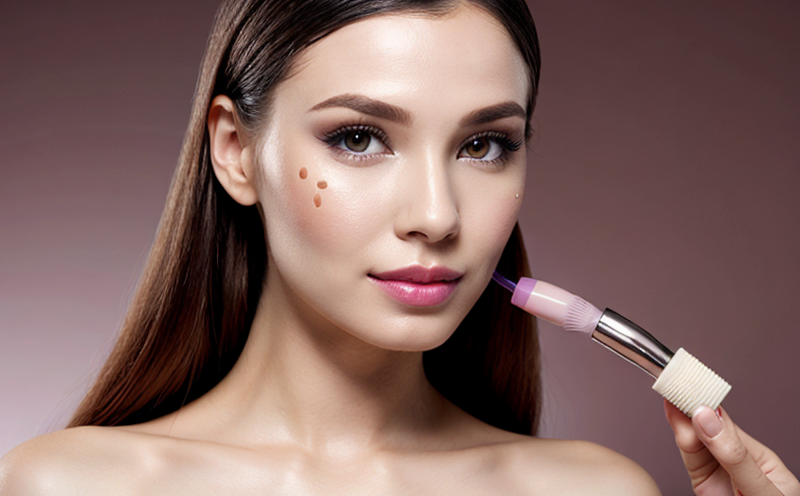In Vitro Testing of Cosmetic Essential Oils
Testing cosmetic essential oils using in vitro methods is a critical aspect of ensuring product safety and efficacy. This approach leverages cell-based or tissue-based systems to assess the potential toxicity, irritation, and sensitization risks associated with these natural ingredients. In vitro testing provides several advantages over traditional animal testing, including reduced ethical concerns, faster results, and cost-effectiveness.
The process begins with the selection of appropriate cell lines that mimic the target tissues or organs. For cosmetic essential oils, this typically involves dermal, respiratory, or gastrointestinal cells due to their potential contact points during use. Once selected, these cells are exposed to varying concentrations of the essential oil under controlled conditions.
The response of the cells is then measured using a variety of assays such as MTT assay for cell viability, LDH release for cytotoxicity, and histamine release or patch tests for allergic reactions. These methods provide quantitative data that can help in understanding the safety profile of each essential oil component.
Additionally, advanced techniques like qPCR (quantitative polymerase chain reaction) can be used to monitor gene expression changes indicative of stress or inflammation. Such information is invaluable for assessing not just short-term effects but also potential long-term impacts on human health.
In vitro tests are often conducted in parallel with other analytical methods such as chromatography and spectroscopy, which offer detailed chemical profiles of the essential oils. By integrating these approaches, manufacturers can gain a comprehensive understanding of both the active ingredients and any impurities that might pose risks.
It is important to note that while in vitro testing offers significant benefits, it should complement rather than replace animal studies where necessary. Regulatory bodies worldwide are increasingly favoring alternative methods due to their ethical implications and alignment with broader sustainability goals. This shift towards more humane yet scientifically robust testing protocols has led to increased international acceptance of these techniques.
- International acceptance includes recognition from major regulatory authorities such as the European Union (EU), which mandates the use of alternative methods whenever possible under its Cosmetics Regulation.
- The U.S. Food and Drug Administration (FDA) also supports the adoption of in vitro tests, particularly for initial safety assessments.
- Japan’s Ministry of Health, Labour and Welfare has been actively promoting the development and validation of such methods to reduce reliance on animal testing.
The growing trend towards cruelty-free practices is driving demand for reliable in vitro solutions. Companies that adopt these technologies early can stay ahead of regulatory changes while demonstrating their commitment to ethical business operations.
Customer Impact and Satisfaction
Implementing in vitro testing offers numerous advantages that directly benefit customers, particularly those who value product safety and environmental responsibility. By adhering to strict international standards like ISO 10993-5 for biocompatibility testing, companies can ensure their essential oil products meet the highest quality benchmarks.
For quality managers and compliance officers, in vitro testing simplifies regulatory processes by providing clear evidence of safety without compromising on efficacy. This allows them to focus more time on product development rather than navigating complex compliance requirements.
R&D engineers find that these tests accelerate innovation cycles by offering rapid feedback loops between formulation changes and potential risks. They also provide valuable insights into ingredient interactions, helping refine formulas for better performance.
Procurement teams appreciate the cost savings associated with reduced reliance on animal testing, allowing budgets to be reallocated towards other strategic initiatives within the organization. Moreover, by demonstrating a commitment to ethical sourcing practices through responsible testing methods, companies enhance their brand reputation and customer loyalty.
In summary, in vitro testing not only enhances product safety but also contributes positively to corporate social responsibility efforts, thereby fostering long-term relationships with customers seeking trustworthy beauty solutions.
International Acceptance and Recognition
- The European Union (EU) has led the way in promoting alternative methods for cosmetic testing, including in vitro approaches. The EU Cosmetics Regulation explicitly encourages companies to explore these options.
- In North America, the U.S. Food and Drug Administration (FDA) supports the use of in vitro tests as part of overall safety assessments.
- Japan’s Ministry of Health, Labour and Welfare has been proactive in endorsing alternative testing methods aimed at reducing animal usage.
- The Organization for Economic Co-operation and Development (OECD) guidelines also recognize in vitro testing as a valid component of regulatory submissions.
The acceptance of these methodologies varies across regions, but the global trend is towards greater adoption. This shift reflects a broader recognition of both ethical considerations surrounding animal welfare and the scientific validity of alternative methods.
Environmental and Sustainability Contributions
The increasing emphasis on sustainability has made in vitro testing an essential part of cosmetic manufacturing processes. By minimizing reliance on animal testing, companies significantly reduce their carbon footprint associated with laboratory experiments. This aligns closely with the United Nations Sustainable Development Goals (SDGs), specifically Goal 12: Responsible Production and Consumption.
Moreover, using cell cultures instead of live animals helps preserve species diversity, contributing positively to biodiversity conservation efforts. Furthermore, the efficiency gains achieved through faster testing cycles allow for quicker iterations in product development, reducing waste throughout the supply chain.
Companies committed to environmental stewardship can leverage these practices as part of their broader sustainability strategy, enhancing transparency and trust with environmentally conscious consumers. This holistic approach ensures that every aspect of production contributes towards a greener future.





